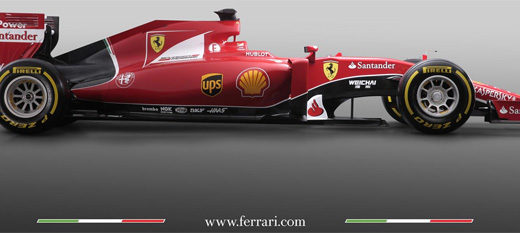Ferrari and F1 Agreement Leaves Most In The Dark
During the 2019 Formula One season, the Ferrari team seemed to have made a major development on their engines. During the middle part of the season, they were noticeably faster in straight line speed compared to others, often ending up 10kph or more faster at the end of the longest straights. The only thing that kept them from winning more races was the fact that their car wasn’t that good around mid speed turns, which makes their end of the straight speed even more impressive as they started out somewhat slower than the others.
The other teams were suspicious, and there was a lot of grumbling in the paddock. F1 and the FIA moved in to investigatem, and that investigation has been ongoing. During the season, a few rule clarifications were issued, to plug certain loop holes that might have existed. By the time the season was over, the Ferrari advantage was gone. The investigation continued.
One significant rule in F1 is that teams are limited as to the amount of fuel that can move from the fuel cell to the engine at any time. They cannot move more than 100 kilograms per hour, and there are instantaneous limits as well. That essentially creates a maximum amount of fuel that can be used at any point, which in turn has the effect of limiting the absolute top performance of the engine. If an engine air to fuel ratio gets too far out, performance would suffer and the power output will drop.
The suggestion in the paddock was that Ferrari was somehow exceeding that instantaneous maximum, and as a result had much higher horsepower available, driving them to a higher top speed. However, each car is fitted with an ultrasonic fuel meter which measures very accurately the amount of fuel flowing from the cell, and Ferrari were not exceeding it. A second measuring device has been added as well to further assure that this limit is not being exceeded.
Over the winter break, the FIA and F1 have been looking at the Ferrari engine and fuel system and have come to the conclusion that they are unable to say for certain that they were cheating, but they are also unable to say that they are entirely legal. A bit of an odd answer, until you consider the possiblities.
The rules do not allow teams to store fuel after the metering process. In other words, the fuel pumped through the meter system must immediately be used to power the car, and cannot be pumped into a separate tank. However, there are of course a few extra little bits of pieces in the way, such as fuel pumps, lines, and so on which means that there is in fact a certain amount of fuel after the measuring device that has not yet been burned in the combustion process. That is a very dynamic set of operations, often with complex routing and mechanical pieces which make the amount of fuel in this limbo variable to each installation and each engine model. There may be a number of pumps, lines, splits, filters, and injectors between those points.
F1’s decision to have a private settlement with Ferrari is within the rules, but makes the other teams upset because they do not know if Ferrari cheated or not. Lawyers for Red Bull Racing have suggested that Ferrari being allowed to keep their runner up spot in the championship cost their team over 20 million US dollars as a result. Other teams on down the line are similarly upset, as each one bumping up one place would make a big difference as to their final prize money.
The problem is F1 apparently is unable to prove exactly how Ferrari bent the rules, and as a result cannot specifically find them in violation. However, the settlement suggests that they have a pretty good idea what was going on, what technology or specific manipulation of the fuel lines and such was occurring. It’s quite likely that whatever Ferrari was doing was not specifically against the rules.
As an example: Let’s say that Ferrari came up with a way to, during peak acceleration, to use all of the fuel in the fuel lines and system after the fuel meter. While in theory this would mean that the engine would run out of fuel at the end of the straight and stop running, the engine may actually keep rotating for a period of time without any actual combustion, and the fuel system could refill itself during that moment of braking, and thus the engine would get fuel and restart itself. It would require as an example for the engine computer to stop sending spark so that there was no attempt at ignition during that part of the cycle.
It would require that the fuel system to be effectively split at a point, where a scavenge style pump would pull the fuel in the line and push it into the other side. This would allow the other side to use all of the fuel in the system even to the point of running the system dry. The system would then recharge itself during deceleration.
If Ferrari put such a system very close to the injectors, they could use all of the fuel in the line from the tank to the engine to depletion on every acceleration event. The amount added could be set such at each track to allow for the length of the longest straight on the track and the amount of time they would have to repressure the system during cornering.
This sort of system would not specifically be illegal, based on what I have read of the regulations. I am sure more technical people than I could explain such a system better, and explain how it does or does not violate the rules, but it would be hard to prove.
Update: Between the time I started to write this piece and the time I published it, a bit more of the truth did come out. While it’s not been entirely confirmed, it seemed that Ferrari had worked out a way to some how orient the fuel flow and the molecules in a way that would cause the fuel meter to under report. So they could effectively mover more than the legal amount. It’s why for 2020 and beyond there are now two independent fuel metering systems, one of which the teams cannot read data from and therefore cannot reverse engineer around as easily. My guess is that as a result, the Ferrari engine will be back down below the Mercedes unit for power, and little will likely change in the pecking order as a result.
With the 2020 season up in the air at this point, there is a very good possibility we will never know the truth.











